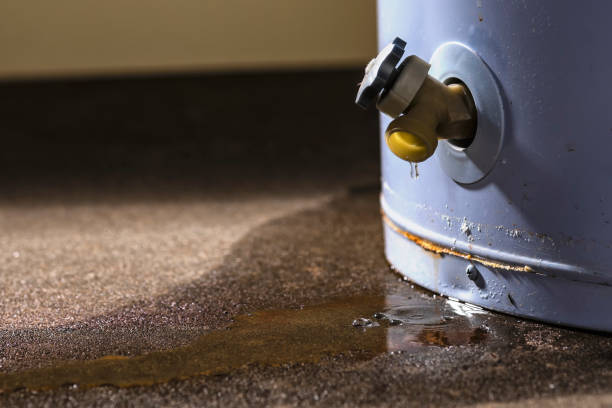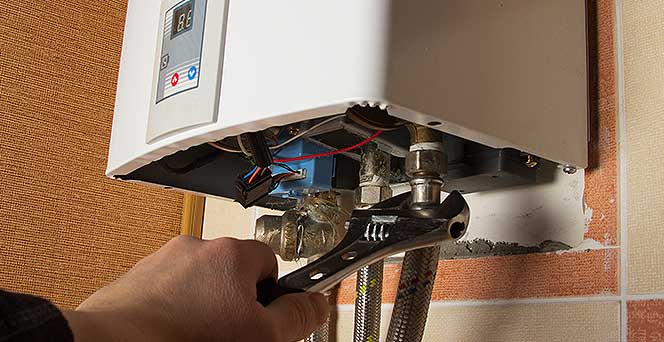Crucial Measures House Owners Should Follow While Managing Faulty Water Heaters
Crucial Measures House Owners Should Follow While Managing Faulty Water Heaters
Blog Article
Everyone seems to have their unique views on the subject of Water Heater Burst.

Whether it is located in the basement or a separate space, damaged hot water heater can cause stress. A standard unit holds 80 gallons, so an overnight leak will certainly lead to a flood. This leads to major building damages with drenched wall surfaces and also floorings. Having no hot water supply is likewise frustrating. If you are dealing with these concerns, bear in mind of the following:
Call the Plumber
After doing the very first two safety steps, you must call your plumber to come right away to take care of a ruptured water heating unit. There are generally indicators that your aging water heater has debris accumulation in the interior.
Don't await significant flooding to call the plumber. Already, you will certainly need to spend more to recover your home. Instead, as soon as you detect these signs, have actually a specialist involved check your hot water heater container. Usually, water heaters have a lifespan of concerning 8 to 12 years. With regular examination and upkeep, you can prolong its life.
Cut Off the Cold Water Supply
Cut off the tanks tap water supply from the source. This goes from your major water line into the container. When your storage tank is in good condition, the cold water quits filling when the container is complete. Because it is dripping, the water will continue to stream. Close the shutoff discovered on top of the heater. Rotate this clockwise to close it off. You need to transform off that major water supply line outside your property if you can not locate it or reach it.
Shut Off Source Of Power
Before calling the plumber, shut down a gas water heater by transforming the temperature dial. This is normally located at the top of the thermostat. Switch off the circuit breaker if you have a design that runs on electrical power. This will certainly prevent electrocution, especially if there is a leakage as water is a conductor. Generally, the heating element turns off when the water hits a certain temperature level. Yet with a broken tank, it may malfunction. Sufficing off ensures you remain safe.
Tidy up Residential property
After calling the plumber, file damages by keeping in mind as well as images so you can claim your house owner's insurance policy. From there, start the instant cleaning. Take out any important possessions to prevent additional saturating. After that, remove any kind of standing water to stop mold and mold development. If you have a submersible water pump, make use of that to drain the water. Otherwise, the traditional container technique will certainly additionally function. Attempt to wipe out every little thing, including baseboards and also wall surfaces. If you have an electric follower as well as dehumidifier, keep them going to keep air distributing. This will certainly help prevent mold growth.
Remember, if you discover any type of problems with your hot water heater, call the pros immediately. You can not take this problem lightly since a faulty thermostat can raise water temperature to an alarmingly high degree, resulting in accidental burns. A broken heating unit stress relief valve can also cause an explosion. For best results, obtain a yearly check so your device obtains checked, cleaned up, drained pipes, as well as filled up, assuring optimal efficiency.
After doing the very first 2 security actions, you should call your plumber to come right away to fix a burst water heater. Instead, as quickly as you detect these indications, have actually a professional come to examine your water heating unit container. Before calling the plumber, shut off a gas water heating unit by transforming the temperature level dial. If you have a submersible water pump, utilize that to drain pipes the water. Bear in mind, if you see any issues with your water heater, call the pros right away.
8 REASONS YOUR HOT WATER HEATER IS NOT WORKING & HOW TO FIX
Water Heater Problems & Solutions
Loose or Damaged In-Line Valve
Unlike a water leak near the bottom of your water tank, a water leak on top of your system can be easily fixed. A common cause of water tank leaks includes a loose in-line valve. This is a handle that is located at the top of the water tank that is engineered to activate or deactivate the flow of water. To fix this problem, you will need to secure the nut that holds the ball or in-line valve in its location. If the leak becomes more severe once it is tightened, you will be required to travel to your local hardware store to purchase a new in-line valve for your water heater.
Damaged Pressure Relief Valve
Most types of water heaters are equipped with a pressure relief valve that is engineered to discharge pressure from the water tank when it becomes too high. If this valve on top of your water heater begins to leak, we recommend purchasing a new one online or from your local store. The process of removing and replacing pressure relief valves is not complicated.
No Warm Water
If you have an electric water heater in your home, the most typical cause of a lack of warm water is a broken heating element. Your water heater is equipped with two heating elements that are tasked with heating incoming water in the water tank. Once a heating element begins to malfunction, you will have little to no hot water to use for showering, cleaning, and laundry.
Low Supply of Hot Water
Are you continuously running out of warm water? This issue may be a byproduct of a cracked dip tube. This tube is engineered to push cold water to the base of your water tank to be heated. Once a crack or hole begins to form in the dip tube, the incoming supply of cold water may be released near the top or middle of your tank. As a result, the cold water on top of the tank will be sent to the faucets and showers in your house. This hot water heater problem can only be fixed by replacing the dip tube on your system. Since the process of installing a new dip tube is complex, we recommend calling a certified technician for help.
A low supply of warm water may also be a signal of excess sediment buildup in your water tank. As your water heater reaches the middle of its life cycle, minerals in water including magnesium and calcium will begin to collect at the base of the water tank. As the minerals continue to grow, there will be less room in the water tank to store hot water. To resolve this problem, flush your water heater to remove the excess minerals.
Water is Too Warm or Cold
If the water in your shower feels uncomfortable hot or cold, you can adjust the temperature of your water by changing the settings on your thermostat. Setting the temperature to 120 degrees Fahrenheit may help you save money on your utility bills. This is an excellent temperature to use if you’re worried about scalding or skin irritation. Does this temperature feel too cold? You may also adjust the thermostat to 140 degrees Fahrenheit to make your showers more pleasant. If your hot water heater is not working when you change the temperature, this is an indicator of a broken thermostat. Immediately find a certified plumbing or heating contractor in your area to repair or replace your thermostat.
Low Water Pressure
Low water pressure is not always caused by a malfunctioning water heater. If you live in an older home with smaller water pipes, the flow of water will be restricted prior to reaching our kitchen or bathroom skins. The only way to eliminate this hot water heater problem is to connect new ¾-inch water lines to your system. Another type of problem that may negatively impact your water pressure includes calcium deposits in water pipes.
As magnesium and calcium begin to form in your pipes, the diameter of your water lines will become smaller. As a result, the warm water from your water heater will not be able to travel in an efficient manner to your sinks or appliances. Since the process of replacing water pipes includes removing drywall, an average homeowner that does not have a plumbing license will not be able to fix this hot water heater problem.
https://www.wmhendersoninc.com/blog/8-reasons-your-water-heater-is-not-working-how-to-fix/

I recently found that write up about Maintaining & Draining a Water Heater while browsing on the internet. Do you know anybody else who is curious about What Do You Do When Your Water Heater Bursts?? Please feel free to share it. Thanks a lot for your time. Visit again soon.
Go Services Report this page